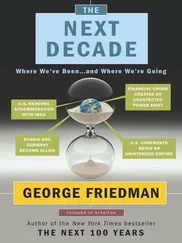The Steadily Single Group
These individuals had never been married. Emma, forever mature and focused, had chosen to remain single. Nevertheless, her life was quite full. After college she had spent a year abroad, staying several months with family friends in Europe and studying for a time with a well-known artist. When she returned to the United States she entered a graduate program and, after completing her Ph.D., joined the social sciences faculty at a nearby university. There, her scholarly activities kept her busy, but in her leisure time she continued to travel. Though she had not been back to Europe since that postcollege year, she had traveled extensively throughout the western United States and had made several trips east. She reported that good relationships with friends and family brought her happiness, as did her work and travels.
While they turned out to be uniquely helpful, these four groups don’t account for the divergent meanings being married, remarried, divorced, or single has for men and women. So we further examined marriage and health separately for the sexes, splitting those four groups into eight. It made a huge difference.
Who lived longer, the married men or the divorced men? This is the comparison made by most studies in this field. In accord with other studies, we found that divorced Terman men were at a much higher mortality risk. The steadily married men were very likely to live to age seventy and beyond, but the divorced men were very unlikely to reach old age—fewer than a third did so!
The more fascinating comparison, however, was between the steadily married men and the remarried men. The remarried men like Philip were less likely to live long lives. They lived longer than the divorced men, but nowhere near as long as the steadily married men. Because both groups were currently married (in 1950), the marriage itself could not be the relevant protective factor. The remarried men had a wife to help with emergencies, to be at their bedside during illness, to encourage healthy habits, and to do all the other things that the wives of the steadily married men could do. So why did the remarried men die sooner?
One key reason was that they had faced the stress of divorce. As one of the greatest social stresses, the strain of divorce harms health directly, but more important, it sets in motion a series of other harmful behaviors and patterns. Ironically, advice to “get married to live longer” may decrease rather increase your chances for that benefit—you cannot face the stress of divorce if you have not married. Statistically, 100 percent of all divorces start with marriage.
But there is also another reason why the remarried men died sooner than the steadily married men. It involves the characteristics of the individuals who get married and stay married. We’ll return to that issue in a moment.
If our explanations of these findings are correct, then steadily single men should do quite well. That is, never having to face the stress of a poor marriage and divorce, and the patterns of unhealthy behaviors that may follow, single men should lead long, healthy lives. On the other hand, single men do not enjoy the benefits of partnership we discussed earlier—help with medical regimens, assistance in recognizing and acting appropriately in a health emergency, protection in hospitals, and so on. It follows that they should fall somewhere in between the two other groups in terms of their life expectancy.
The steadily single men like John, for example, who never married, did indeed outlive the remarried group, and they way outlived the divorced men. That said, they did not, on average, live as long as the steadily married men.
Which Women Lived Longest?
Ever unpredictable, the women in the Terman study showed fascinating and unexpected results. Like their male counterparts, steadily married women lived somewhat longer lives than those women who had divorced and then remarried. The surprise emerged for women, like Barbara, who had gotten divorced and not remarried. These women didn’t fare nearly as badly as did their divorced male peers. They usually lived long lives. That is, a surprising number of the women who divorced their husbands and then stayed single did fine—on average they lived nearly as long as their steadily married counterparts.
Being divorced was much less harmful to women’s health than it was to men’s health. This surprising finding, which had never been given much consideration before, raised many more questions about whether poor marriages could damage women’s health so much that they would be better off unmarried. One thing we now knew was that simple advice to “get married to live longer” was surely flawed and incomplete.
The steadily single women were of intermediate risk. They didn’t live as long as the steadily married women, but they outlived those who married and divorced and then remarried. As we later discovered, women who could thrive in a good marriage tended to stay especially healthy, but many of the rest were better off single.
As we thought more about the Terman men and women, we were pondering the H. L. Mencken saying: “Men have a much better time of it than women. For one thing, they marry later. For another thing, they die earlier.” 53 53 From H. L. Mencken, A Little Book in C Major (New York: John Lane, 1916), 14.
Maybe Mencken was right but for the wrong reasons.
Personality, Marriage, Divorce, and Longevity
One of the best things about having the full life histories of the Terman participants is the opportunity it gave us to take a broad perspective. We weren’t confined by data on marriage, divorce, or remarriage alone—we were able to go back in time and look at the pathways leading to marriage.
The Terman children who grew up to be in the steadily married group were less likely to have faced parental divorce than those in the remarried group. That is, their history with steady marriage or divorce of their parents was relevant to their own later marital history.
Parental divorce isn’t nearly enough, however, to predict the potential of one’s success or failure at marriage. Personality prior to marriage was directly linked to marital success. Patricia, for example, had been a conscientious and resilient child before her happy marriage to Charles. It was not marriage in isolation that would affect Patricia’s long-term health and life span, but the combination and interplay of her disposition and choices.
Heading back to the data archives, our research team went in and examined the childhood personalities of the people in the different marriage and divorce groupings. We of course knew that successful marriage is not random—some individuals just don’t have the temperament required for a good marriage. Indeed, when we compared the marriage groups we discovered that those folks who later became consistently married individuals had been more conscientious as children. In other words, if you were a prudent and responsible child, then you were more likely to grow up to have a successful marriage.
Our findings and interpretations of the relevance of early personality traits to marriage satisfaction squared with other studies by researchers investigating marriage and happiness. These studies have found that married people tend to be happier than unmarried people, but this is usually because people who get married tend to be happier several years before marriage; likewise, people who get divorced tend to be less happy before they are married. 54 54 For a discussion of marriage and happiness see R. E. Lucas and A. E. Clark, “Do People Really Adapt to Marriage?” Journal of Happiness Studies 7 (2006): 405-26.
Of course the marriage itself has a big impact on overall happiness but it proves imperative to examine the qualities and previous histories of those entering into marriage.
Читать дальше











